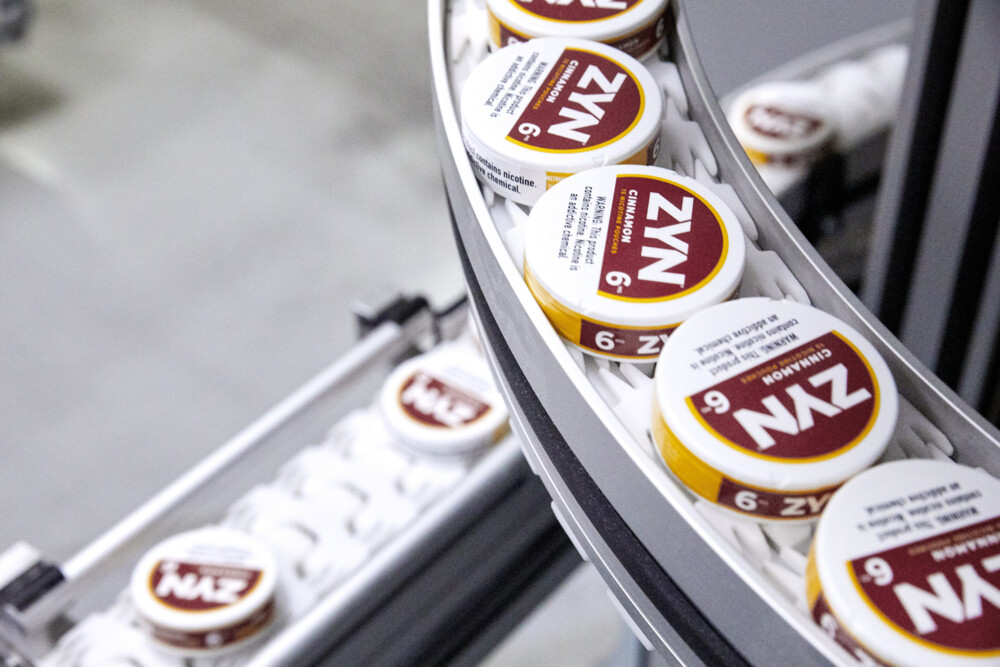How heated tobacco might change the US
By Cheryl K. Olson
A new kind of nicotine alternative is sidling back onto the U.S. market. Modern heated-tobacco products (HTPs) were gone before most Americans knew they even existed. After a limited test, a patent dispute took them off U.S. shelves in 2021.
The gradual return of HTPs has just begun, with a single brand. Within a few years, Americans will likely have access to multiple options now sold in other nations.
Conversations with a close family friend, a former pack-a-day smoker, piqued my interest in the potential of heated tobacco. While working for the European Union from Spain, he had sought out and rejected cigarette alternatives, from vapes to nicotine gum. For him, heated tobacco was a “radically different” revelation.
“It soothed my needs. It felt right and reassuring,” he told me. “From the moment I bought my IQOS, in 2017, I never smoked a cigarette again.”
Here’s a quick introduction to heated tobacco and its potential to attract and benefit Americans who smoke.
What HTPs Are and Aren’t
I asked Corey Henry, director of U.S. communications at Philip Morris International, to help me understand this product category. Basically, an HTP involves electronically heating a stick or capsule of tobacco to beneath the point of combustion, so it releases an aerosol but doesn’t burn. The design of the heating element varies.
The primary difference between an HTP and an e-cigarette? “A heated-tobacco product has to have some tobacco presence, whether it’s a leaf or paste,” says Henry.
HTP ancestors included Premier and Eclipse from R.J. Reynolds. These products were not electronic. The heat came from lighting a carbon tip (which glowed like a piece of charcoal on a barbecue); it was distributed through a rod. This approach did reduce some toxicants. PMI introduced the first electronic HTPs, including Accord in the U.S. and Heatbar in Germany.
According to the Financial Times, HTPs have enjoyed steady worldwide growth, exceeding that of vaping. The global HTP retail market value is estimated to reach $38.9 billion this year. The largest markets thus far include Japan, Italy and South Korea. In addition to IQOS, major brands include BAT’s Glo and Japan Tobacco’s Ploom.
American Evolution
The U.S. Food and Drug Administration first authorized the marketing of an IQOS “heat-not-burn” system in 2019. This included a holder and charger device plus several types of heated-tobacco units, called Heatsticks. That year, IQOS was gradually introduced in several Southeastern U.S. test markets by Philip Morris USA/Altria. Due to a dispute with R.J. Reynolds over technology patent infringement, IQOS left the U.S. market after just two years.
In early 2024, PMI took over from Altria the exclusive U.S. commercialization rights to the IQOS tobacco-heating system. After some delay, the IQOS3 model (authorized by the FDA in 2021) will test-launch in Austin, Texas, this fall. Henry noted that internationally, IQOS launches usually start in one or two cities. “You can make assumptions going in, but then you’ve got to test those assumptions and adjust, adapt.”
The national rollout of IQOS awaits the FDA’s OK of the latest evolution of IQOS, called Iluma. Applications were submitted to the FDA in October 2023; marketing authorization is anticipated in the second half of 2025. Iluma features various upgrades, including a slightly different heating technology and distinctive tobacco sticks. IQOS Iluma is available internationally in over two dozen markets.
“There’s a great level of interest to see how IQOS does in the U.S., so they want to see it launch and expand rapidly,” says Henry. “What we say is patience. There’s 28 million smokers, there’s 50 states—it’s basically like the European Union.”
U.S. HTP competitors are on the horizon. For example, a BAT submission for Glo has been under FDA review since 2021, along with a modified-risk tobacco product application submitted in 2023. Altria has partnered with JT Group to submit a PMTA to the FDA with the goal of bringing Ploom to the U.S.
The FDA’s list of authorized e-cigarettes includes a Logic Vapeleaf product that vaporizes capsules that contain tobacco. This is technically a heated-tobacco product. The product appears to be no longer marketed.
Attractions and Risks
One reason for a slow U.S. rollout is the low level of familiarity with heated tobacco. People need to get clear on the basics: It generates an aerosol; it doesn’t burn tobacco.
“There’s always an initial period of awareness and education that you have to do with adults who smoke, to help them understand what it is and what it isn’t,” says Henry. “When people hear the concept, the reaction is, ‘So … it’s like vaping?’”
We don’t even know how much awareness or confusion may exist. A large government survey fielded in May 2019 asked whether adults had heard of or tried heated-tobacco products (or heat-not-burn). Overall, 8.6 percent said they had heard of heated tobacco, and one-half of 1 percent had tried it. Here’s the catch: The brands mentioned in the survey questions were IQOS, Glo and Eclipse. Respondents who claimed knowledge of heated tobacco were likely thinking of the outdated Eclipse.
Responses to the 2023 National Youth Tobacco Survey are another example. One percent of respondents (representing 370,000 teens) claimed to have used an HTP. Given that the category was not sold anywhere in the U.S. at the time, this is impossible; it can only be a misunderstanding. The next few youth surveys in the U.S. will require cautious interpretation of this topic.
What makes us think people who smoke will switch to HTPs? Randomized controlled studies have shown that vaping works to help people stop smoking, even those without plans to quit. For HTPs, we’re not there yet. That kind of evidence would raise the comfort level of health professionals and public health advocates. An Italian trial found good results for HTPs, comparable to e-cigarettes, for smoking cessation.
Japan makes a good test of HTPs’ potential; sales of e-cigarettes are restricted, and oral products are culturally unappealing. Reduced-risk products are reportedly close to 40 percent of total tobacco industry volume in Japan, with cigarette sales nearly halved since 2015. The latest estimates suggest nearly 12 percent of adults use HTPs. It’s less clear yet how many switch completely from cigarettes to HTPs.
According to Henry, PMI’s research finds that internationally, about 72 percent of smokers who switch to IQOS do so fully. He anticipates similar results in the U.S.
Do people have lower exposure to some toxicants and carcinogens when they use HTPs instead of cigarettes? A Cochrane review of randomized controlled trials found moderate-certainty evidence for that. Also, the FDA authorized IQOS 2.4 and 3.0 versions to be marketed with reduced-exposure messaging. Specifically, “Scientific studies have shown that switching completely from conventional cigarettes to the IQOS system significantly reduces your body’s exposure to harmful or potentially harmful chemicals.”
‘Easier to Navigate’
HTPs are designed to mimic the physical sensations of smoking. “We think that bridge is a little easier to navigate with heated tobacco because there’s a level of familiarity,” says Henry. For example, “Your experience with an IQOS heat stick is six minutes or 14 puffs, about the same time that a smoker will smoke a cigarette.”
Due to this familiarity, my friend in Spain found switching to heated tobacco a quick and smooth adjustment. “With a coffee, when talking with someone, the routine in which I use IQOS is identical to my routine when I smoked,” he said. He learned to keep an extra charger at his office and in his car.
“The charger you hold in your hand has a very nice feel,” he said. “It’s light, it fits anywhere. So I didn’t miss having a cigarette in my hand,” he said. He also praised the absence of stale smoke smell in his home, car and clothing.
What else might attract Americans to heated tobacco? One U.K. survey of nicotine users found that common reasons for trying HTPs included curiosity; lack of smell, smoke and ashes; greater social acceptability; wanting to cut down or quit cigarette use; and enjoying the flavors or taste.
A Harm Reduction Journal study of the U.S. IQOS experience found that people who switched to the initial version were somewhat more educated and higher-income than the average smoking adult. That’s not unusual for early adopters of a new technology. It will be interesting to see how use patterns evolve as people get familiar with the device and see others switch to it.
A Role to Play
Some health advocacy groups have criticized PMI’s claims, suggesting that benefits of IQOS had been overstated. I’ve often wondered how my public health colleagues would view vaping if it had been framed differently at the start. Vaping burst into wide awareness as the subject of a youth-use moral panic. That first impression is hard to overcome. I applaud a careful, gradual, unflashy U.S. reintroduction for HTPs.
As one industry observer pointed out to me, the few e-cigarettes now authorized for sale by the FDA represent older technologies. New HTP technologies entering the market may benefit from that contrast. Another unknown affecting the fate of HTPs is whether sticks will be taxed like cigarettes or at a lower rate that encourages switching.
Now that nondeadly alternatives to smoking exist, it’s critical to speed up switching for those who can’t or don’t want to quit. More options are most welcome.
“There really isn’t a silver-bullet solution for smoke-free product alternatives,” says Henry. “It’s important that we distinguish heated tobacco from e-vapor, but in a way that isn’t disparaging. They each have a role to play.”














